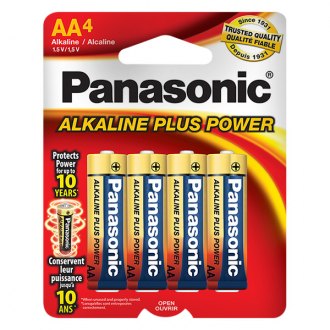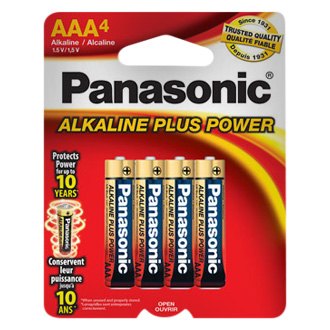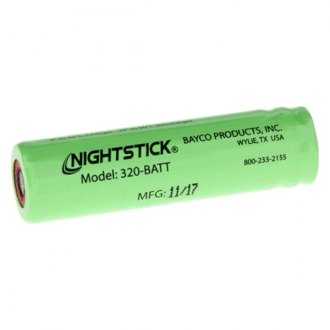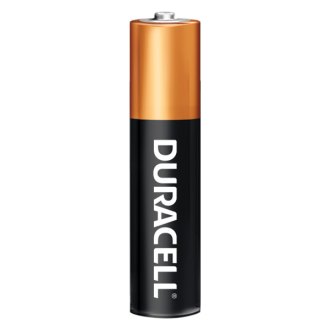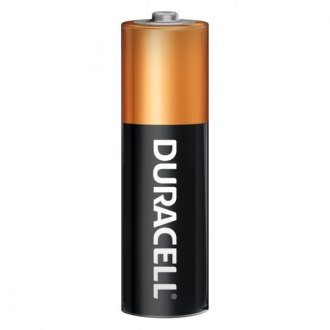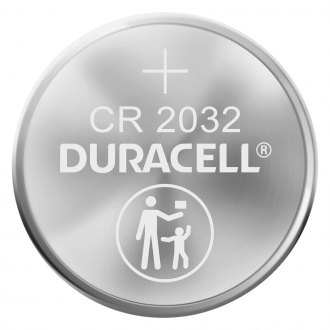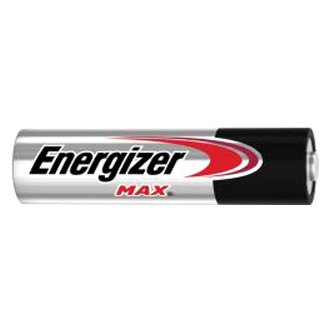Batteries & Chargers

Featured Brands
-
 Install Bay®CR2450 3 V Lithium Coin Cell Batteries (5 Pieces) (CR2450)CR2450 3 V Lithium Coin Cell Batteries (5 Pieces) by Install Bay®. This product is made of high-quality materials to serve you for years to come. Designed using state-of-the-art technology and with customers in mind. It will meet your...Designed to help to get your job done rightManufactured utilizing the highest quality materials$19.99
Install Bay®CR2450 3 V Lithium Coin Cell Batteries (5 Pieces) (CR2450)CR2450 3 V Lithium Coin Cell Batteries (5 Pieces) by Install Bay®. This product is made of high-quality materials to serve you for years to come. Designed using state-of-the-art technology and with customers in mind. It will meet your...Designed to help to get your job done rightManufactured utilizing the highest quality materials$19.99 -
 Panasonic®Plus Power™ AA 1.5 V Alkaline Batteries (4 Pieces) (AM-3PA/4B)Plus Power™ AA 1.5 V Alkaline Batteries (4 Pieces) (AM-3PA/4B) by Panasonic®. Panasonic’s AA , AAA, C, and D size Alkaline Plus Power batteries protect power for up to 10 years, and 9V up to 5 years, when unused and stored properly....Designed to help to get your job done rightManufactured utilizing the highest quality materials$6.06
Panasonic®Plus Power™ AA 1.5 V Alkaline Batteries (4 Pieces) (AM-3PA/4B)Plus Power™ AA 1.5 V Alkaline Batteries (4 Pieces) (AM-3PA/4B) by Panasonic®. Panasonic’s AA , AAA, C, and D size Alkaline Plus Power batteries protect power for up to 10 years, and 9V up to 5 years, when unused and stored properly....Designed to help to get your job done rightManufactured utilizing the highest quality materials$6.06 -
 Panasonic®Plus Power™ AA 1.5 V Alkaline Batteries (48 Pieces) (LR6PA/48PC)Plus Power™ AA 1.5 V Alkaline Batteries (48 Pieces) (LR6PA/48PC) by Panasonic®. Panasonic’s AA , AAA, C, and D size Alkaline Plus Power batteries protect power for up to 10 years, and 9V up to 5 years, when unused and stored...Designed to help to get your job done rightManufactured utilizing the highest quality materials$21.26
Panasonic®Plus Power™ AA 1.5 V Alkaline Batteries (48 Pieces) (LR6PA/48PC)Plus Power™ AA 1.5 V Alkaline Batteries (48 Pieces) (LR6PA/48PC) by Panasonic®. Panasonic’s AA , AAA, C, and D size Alkaline Plus Power batteries protect power for up to 10 years, and 9V up to 5 years, when unused and stored...Designed to help to get your job done rightManufactured utilizing the highest quality materials$21.26 -
 Panasonic®Plus Power™ AA 1.5 V Alkaline Batteries (8 Pieces) (AM-3PA/8B)Plus Power™ AA 1.5 V Alkaline Batteries (8 Pieces) (AM-3PA/8B) by Panasonic®. Panasonic’s AA , AAA, C, and D size Alkaline Plus Power batteries protect power for up to 10 years, and 9V up to 5 years, when unused and stored properly....Designed to help to get your job done rightManufactured utilizing the highest quality materials$8.83
Panasonic®Plus Power™ AA 1.5 V Alkaline Batteries (8 Pieces) (AM-3PA/8B)Plus Power™ AA 1.5 V Alkaline Batteries (8 Pieces) (AM-3PA/8B) by Panasonic®. Panasonic’s AA , AAA, C, and D size Alkaline Plus Power batteries protect power for up to 10 years, and 9V up to 5 years, when unused and stored properly....Designed to help to get your job done rightManufactured utilizing the highest quality materials$8.83 -
 Panasonic®Plus Power™ AAA 1.5 V Alkaline Batteries (16 Pieces) (LR03PA/16BH)Plus Power™ AAA 1.5 V Alkaline Batteries (16 Pieces) (LR03PA/16BH) by Panasonic®. Panasonic’s AA , AAA, C, and D size Alkaline Plus Power batteries protect power for up to 10 years, and 9V up to 5 years, when unused and stored...Designed to help to get your job done rightManufactured utilizing the highest quality materials$12.17
Panasonic®Plus Power™ AAA 1.5 V Alkaline Batteries (16 Pieces) (LR03PA/16BH)Plus Power™ AAA 1.5 V Alkaline Batteries (16 Pieces) (LR03PA/16BH) by Panasonic®. Panasonic’s AA , AAA, C, and D size Alkaline Plus Power batteries protect power for up to 10 years, and 9V up to 5 years, when unused and stored...Designed to help to get your job done rightManufactured utilizing the highest quality materials$12.17 -
 Panasonic®Plus Power™ AAA 1.5 V Alkaline Batteries (24 Pieces) (LR03XWAC)Plus Power™ AAA 1.5 V Alkaline Batteries (24 Pieces) (LR03XWAC) by Panasonic®. Panasonic’s AA , AAA, C, and D size Alkaline Plus Power batteries protect power for up to 10 years, and 9V up to 5 years, when unused and stored...Designed to help to get your job done rightManufactured utilizing the highest quality materials$15.98
Panasonic®Plus Power™ AAA 1.5 V Alkaline Batteries (24 Pieces) (LR03XWAC)Plus Power™ AAA 1.5 V Alkaline Batteries (24 Pieces) (LR03XWAC) by Panasonic®. Panasonic’s AA , AAA, C, and D size Alkaline Plus Power batteries protect power for up to 10 years, and 9V up to 5 years, when unused and stored...Designed to help to get your job done rightManufactured utilizing the highest quality materials$15.98 -
 Panasonic®Plus Power™ AAA 1.5 V Alkaline Batteries (4 Pieces) (AM-4PA/4B)Plus Power™ AAA 1.5 V Alkaline Batteries (4 Pieces) (AM-4PA/4B) by Panasonic®. Panasonic’s AA , AAA, C, and D size Alkaline Plus Power batteries protect power for up to 10 years, and 9V up to 5 years, when unused and stored...Designed to help to get your job done rightManufactured utilizing the highest quality materials$6.06
Panasonic®Plus Power™ AAA 1.5 V Alkaline Batteries (4 Pieces) (AM-4PA/4B)Plus Power™ AAA 1.5 V Alkaline Batteries (4 Pieces) (AM-4PA/4B) by Panasonic®. Panasonic’s AA , AAA, C, and D size Alkaline Plus Power batteries protect power for up to 10 years, and 9V up to 5 years, when unused and stored...Designed to help to get your job done rightManufactured utilizing the highest quality materials$6.06 -
 Panasonic®Plus Power™ AAA 1.5 V Alkaline Batteries (8 Pieces) (AM-4PA/8B)Plus Power™ AAA 1.5 V Alkaline Batteries (8 Pieces) (AM-4PA/8B) by Panasonic®. Panasonic’s AA , AAA, C, and D size Alkaline Plus Power batteries protect power for up to 10 years, and 9V up to 5 years, when unused and stored...Designed to help to get your job done rightManufactured utilizing the highest quality materials$8.83
Panasonic®Plus Power™ AAA 1.5 V Alkaline Batteries (8 Pieces) (AM-4PA/8B)Plus Power™ AAA 1.5 V Alkaline Batteries (8 Pieces) (AM-4PA/8B) by Panasonic®. Panasonic’s AA , AAA, C, and D size Alkaline Plus Power batteries protect power for up to 10 years, and 9V up to 5 years, when unused and stored...Designed to help to get your job done rightManufactured utilizing the highest quality materials$8.83 -
 Rayovac®9 V Zinc-Carbon Heavy Duty Primary Battery (D1604-1F)9 V Zinc-Carbon Heavy Duty Primary Battery (D1604-1F) by Rayovac®. Power low-drain devices at a value price. A cost-effective power solution. The zinc carbon formula inside RAYOVAC™ BATTERIES is perfect for low-drain devices like...RAYOVAC™ Zinc Carbon batteries are a great way to power low-drain devices at a great priceZinc Carbon formula$5.67
Rayovac®9 V Zinc-Carbon Heavy Duty Primary Battery (D1604-1F)9 V Zinc-Carbon Heavy Duty Primary Battery (D1604-1F) by Rayovac®. Power low-drain devices at a value price. A cost-effective power solution. The zinc carbon formula inside RAYOVAC™ BATTERIES is perfect for low-drain devices like...RAYOVAC™ Zinc Carbon batteries are a great way to power low-drain devices at a great priceZinc Carbon formula$5.67 -
 Rayovac®High Energy™ 9 V Alkaline Primary Batteries (2 Pieces) (A1604-2J)High Energy™ 9 V Alkaline Primary Batteries (2 Pieces) (A1604-2J) by Rayovac®. Rayovac spent over 110 years thinking about batteries so you can think about them less. RAYOVAC™ HIGH ENERGY™ 9V batteries are long lasting, guaranteed.Designed to prevent damaging leaks and tested twice prior to shipmentIdeal for high use devices including toys, clocks, smoke detectors, and more$10.13
Rayovac®High Energy™ 9 V Alkaline Primary Batteries (2 Pieces) (A1604-2J)High Energy™ 9 V Alkaline Primary Batteries (2 Pieces) (A1604-2J) by Rayovac®. Rayovac spent over 110 years thinking about batteries so you can think about them less. RAYOVAC™ HIGH ENERGY™ 9V batteries are long lasting, guaranteed.Designed to prevent damaging leaks and tested twice prior to shipmentIdeal for high use devices including toys, clocks, smoke detectors, and more$10.13 -
 Rayovac®High Energy™ AA 1.5 V Alkaline Primary Batteries (8 Pieces) (815-8K)High Energy™ AA 1.5 V Alkaline Primary Batteries (8 Pieces) (815-8K) by Rayovac®. Rayovac spent over 110 years thinking about batteries so you can think about them less. RAYOVAC™ HIGH ENERGY™ AA batteries are long lasting,...Long Lasting GuaranteedDesigned to prevent damaging leaks and tested twice prior to shipment$8.81
Rayovac®High Energy™ AA 1.5 V Alkaline Primary Batteries (8 Pieces) (815-8K)High Energy™ AA 1.5 V Alkaline Primary Batteries (8 Pieces) (815-8K) by Rayovac®. Rayovac spent over 110 years thinking about batteries so you can think about them less. RAYOVAC™ HIGH ENERGY™ AA batteries are long lasting,...Long Lasting GuaranteedDesigned to prevent damaging leaks and tested twice prior to shipment$8.81 -
 Rayovac®High Energy™ C 1.5 V Alkaline Primary Batteries (4 Pieces) (814-4TK)High Energy™ C 1.5 V Alkaline Primary Batteries (4 Pieces) (814-4TK) by Rayovac®. Rayovac spent over 110 years thinking about batteries so you can think about them less. RAYOVAC™ HIGH ENERGY™ C batteries are long lasting,...Long Lasting GuaranteedDesigned to prevent damaging leaks and tested twice prior to shipment$9.65
Rayovac®High Energy™ C 1.5 V Alkaline Primary Batteries (4 Pieces) (814-4TK)High Energy™ C 1.5 V Alkaline Primary Batteries (4 Pieces) (814-4TK) by Rayovac®. Rayovac spent over 110 years thinking about batteries so you can think about them less. RAYOVAC™ HIGH ENERGY™ C batteries are long lasting,...Long Lasting GuaranteedDesigned to prevent damaging leaks and tested twice prior to shipment$9.65 -
 Rayovac®High Energy™ D Alkaline Primary Batteries (4 Pieces) (813-4TK)High Energy™ D Alkaline Primary Batteries (4 Pieces) (813-4TK) by Rayovac®. Rayovac spent over 110 years thinking about batteries so you can think about them less. RAYOVAC™ HIGH ENERGY™ D batteries are long lasting, guaranteed -...Long Lasting GuaranteedDesigned to prevent damaging leaks and tested twice prior to shipment$11.16
Rayovac®High Energy™ D Alkaline Primary Batteries (4 Pieces) (813-4TK)High Energy™ D Alkaline Primary Batteries (4 Pieces) (813-4TK) by Rayovac®. Rayovac spent over 110 years thinking about batteries so you can think about them less. RAYOVAC™ HIGH ENERGY™ D batteries are long lasting, guaranteed -...Long Lasting GuaranteedDesigned to prevent damaging leaks and tested twice prior to shipment$11.16 -
 Cliplight®HEMITECH™ Adapter (410180)HEMITECH™ Adapter by Cliplight®. If you're looking for a reliable solution to complete your project, this 1st-grade product is right up your alley. Designed utilizing the finest materials, it delivers unmatched levels of durability...Designed to help to get your job done rightManufactured utilizing the highest quality materials$13.38
Cliplight®HEMITECH™ Adapter (410180)HEMITECH™ Adapter by Cliplight®. If you're looking for a reliable solution to complete your project, this 1st-grade product is right up your alley. Designed utilizing the finest materials, it delivers unmatched levels of durability...Designed to help to get your job done rightManufactured utilizing the highest quality materials$13.38 -
 Rayovac®High Energy™ 9 V Alkaline Primary Battery (A1604-1TK)High Energy™ 9 V Alkaline Primary Battery (A1604-1TK) by Rayovac®. Rayovac spent over 110 years thinking about batteries so you can think about them less. RAYOVAC™ HIGH ENERGY™ 9V batteries are long lasting, guaranteed.Designed to prevent damaging leaks and tested twice prior to shipmentIdeal for high use devices including toys, clocks, smoke detectors, and more$6.16
Rayovac®High Energy™ 9 V Alkaline Primary Battery (A1604-1TK)High Energy™ 9 V Alkaline Primary Battery (A1604-1TK) by Rayovac®. Rayovac spent over 110 years thinking about batteries so you can think about them less. RAYOVAC™ HIGH ENERGY™ 9V batteries are long lasting, guaranteed.Designed to prevent damaging leaks and tested twice prior to shipmentIdeal for high use devices including toys, clocks, smoke detectors, and more$6.16 -
 Allied Tools®Dual Port USB Car ChargerDual Port USB Car Charger by Allied Tools®. This product is made of high-quality materials to serve you for years to come. Designed using state-of-the-art technology and with customers in mind. It will meet your needs and deliver great...Designed to help to get your job done rightManufactured utilizing the highest quality materials$5.23 - $16.13
Allied Tools®Dual Port USB Car ChargerDual Port USB Car Charger by Allied Tools®. This product is made of high-quality materials to serve you for years to come. Designed using state-of-the-art technology and with customers in mind. It will meet your needs and deliver great...Designed to help to get your job done rightManufactured utilizing the highest quality materials$5.23 - $16.13 -
 Bayco®NightStick™ 18650 Battery ChargerNightStick™ 18650 Battery Charger by Bayco®. This portable micro-USB external battery charger is designed to recharge single-cell non-proprietary 18650 lithium-ion rechargeable batteries. Embedded is a red/green LED voltage...Micro-USBRed voltage indicator when charging$16.84 - $24.14
Bayco®NightStick™ 18650 Battery ChargerNightStick™ 18650 Battery Charger by Bayco®. This portable micro-USB external battery charger is designed to recharge single-cell non-proprietary 18650 lithium-ion rechargeable batteries. Embedded is a red/green LED voltage...Micro-USBRed voltage indicator when charging$16.84 - $24.14 -
 Lightforce®Enforcer™ Power CordEnforcer™ Power Cord by Lightforce®. This product is made of high-quality materials to serve you for years to come. Designed using state-of-the-art technology and with customers in mind. It will meet your needs and deliver great...Designed to help to get your job done rightManufactured utilizing the highest quality materials$20.90 - $22.80
Lightforce®Enforcer™ Power CordEnforcer™ Power Cord by Lightforce®. This product is made of high-quality materials to serve you for years to come. Designed using state-of-the-art technology and with customers in mind. It will meet your needs and deliver great...Designed to help to get your job done rightManufactured utilizing the highest quality materials$20.90 - $22.80 -
 Maglite®Wall ChargerWall Charger by Maglite®. This product is made of high-quality materials to serve you for years to come. Designed using state-of-the-art technology and with customers in mind. It will meet your needs and deliver great quality at an...Designed to help to get your job done rightManufactured utilizing the highest quality materials$14.90 - $16.16
Maglite®Wall ChargerWall Charger by Maglite®. This product is made of high-quality materials to serve you for years to come. Designed using state-of-the-art technology and with customers in mind. It will meet your needs and deliver great quality at an...Designed to help to get your job done rightManufactured utilizing the highest quality materials$14.90 - $16.16 -
 Bayco®Li-ion Rechargable Battery PackLi-ion Rechargable Battery Pack by Bayco®. This product is made of high-quality materials to serve you for years to come. Designed using state-of-the-art technology and with customers in mind. It will meet your needs and deliver great...No Recharge Memory Effect2 Year limited lifetime warranty$24.14 - $28.18
Bayco®Li-ion Rechargable Battery PackLi-ion Rechargable Battery Pack by Bayco®. This product is made of high-quality materials to serve you for years to come. Designed using state-of-the-art technology and with customers in mind. It will meet your needs and deliver great...No Recharge Memory Effect2 Year limited lifetime warranty$24.14 - $28.18 -
 Coast®Li-Pol Rechargable Battery PackLi-Pol Rechargable Battery Pack by Coast®. This product is made of high-quality materials to serve you for years to come. Designed using state-of-the-art technology and with customers in mind. It will meet your needs and deliver great...Designed to help to get your job done rightManufactured utilizing the highest quality materials$12.66 - $13.14
Coast®Li-Pol Rechargable Battery PackLi-Pol Rechargable Battery Pack by Coast®. This product is made of high-quality materials to serve you for years to come. Designed using state-of-the-art technology and with customers in mind. It will meet your needs and deliver great...Designed to help to get your job done rightManufactured utilizing the highest quality materials$12.66 - $13.14 -
 Coast®Li-ion Rechargable Battery PackLi-ion Rechargable Battery Pack by Coast®. This product is made of high-quality materials to serve you for years to come. Designed using state-of-the-art technology and with customers in mind. It will meet your needs and deliver great...Designed to help to get your job done rightManufactured utilizing the highest quality materials$11.45 - $21.12
Coast®Li-ion Rechargable Battery PackLi-ion Rechargable Battery Pack by Coast®. This product is made of high-quality materials to serve you for years to come. Designed using state-of-the-art technology and with customers in mind. It will meet your needs and deliver great...Designed to help to get your job done rightManufactured utilizing the highest quality materials$11.45 - $21.12 -
 Duracell®AAA Alkaline BatteryAAA Alkaline Battery by Duracell®. This product is made of high-quality materials to serve you for years to come. Designed using state-of-the-art technology and with customers in mind. It will meet your needs and deliver great quality...Designed to help to get your job done rightManufactured utilizing the highest quality materials$8.52 - $28.42
Duracell®AAA Alkaline BatteryAAA Alkaline Battery by Duracell®. This product is made of high-quality materials to serve you for years to come. Designed using state-of-the-art technology and with customers in mind. It will meet your needs and deliver great quality...Designed to help to get your job done rightManufactured utilizing the highest quality materials$8.52 - $28.42 -
 Duracell®COPPERTOP™ AA Alkaline Primary BatteryCOPPERTOP™ AA Alkaline Primary Battery by Duracell®. This product is made of high-quality materials to serve you for years to come. Designed using state-of-the-art technology and with customers in mind. It will meet your needs and...Designed to help to get your job done rightManufactured utilizing the highest quality materials$2.00 - $28.42
Duracell®COPPERTOP™ AA Alkaline Primary BatteryCOPPERTOP™ AA Alkaline Primary Battery by Duracell®. This product is made of high-quality materials to serve you for years to come. Designed using state-of-the-art technology and with customers in mind. It will meet your needs and...Designed to help to get your job done rightManufactured utilizing the highest quality materials$2.00 - $28.42 -
 Duracell®COPPERTOP™ AAA Alkaline Primary BatteryCOPPERTOP™ AAA Alkaline Primary Battery by Duracell®. This product is made of high-quality materials to serve you for years to come. Designed using state-of-the-art technology and with customers in mind. It will meet your needs and...Designed to help to get your job done rightManufactured utilizing the highest quality materials$1.98 - $26.51
Duracell®COPPERTOP™ AAA Alkaline Primary BatteryCOPPERTOP™ AAA Alkaline Primary Battery by Duracell®. This product is made of high-quality materials to serve you for years to come. Designed using state-of-the-art technology and with customers in mind. It will meet your needs and...Designed to help to get your job done rightManufactured utilizing the highest quality materials$1.98 - $26.51 -
 Duracell®COPPERTOP™ D Alkaline Primary BatteryCOPPERTOP™ D Alkaline Primary Battery by Duracell®. This product is made of high-quality materials to serve you for years to come. Designed using state-of-the-art technology and with customers in mind. It will meet your needs and...Designed to help to get your job done rightManufactured utilizing the highest quality materials$3.45 - $23.49
Duracell®COPPERTOP™ D Alkaline Primary BatteryCOPPERTOP™ D Alkaline Primary Battery by Duracell®. This product is made of high-quality materials to serve you for years to come. Designed using state-of-the-art technology and with customers in mind. It will meet your needs and...Designed to help to get your job done rightManufactured utilizing the highest quality materials$3.45 - $23.49 -
 Duracell®COPPERTOP™ Plus Power™ 9 V Alkaline Primary BatteryCOPPERTOP™ Plus Power™ 9 V Alkaline Primary Battery by Duracell®. This product is made of high-quality materials to serve you for years to come. Designed using state-of-the-art technology and with customers in mind. It will meet...Designed to help to get your job done rightManufactured utilizing the highest quality materials$12.67 - $15.59
Duracell®COPPERTOP™ Plus Power™ 9 V Alkaline Primary BatteryCOPPERTOP™ Plus Power™ 9 V Alkaline Primary Battery by Duracell®. This product is made of high-quality materials to serve you for years to come. Designed using state-of-the-art technology and with customers in mind. It will meet...Designed to help to get your job done rightManufactured utilizing the highest quality materials$12.67 - $15.59 -
 Duracell®CR1632 Lithium Coin Cell BatteryCR1632 Lithium Coin Cell Battery by Duracell®. This product is made of high-quality materials to serve you for years to come. Designed using state-of-the-art technology and with customers in mind. It will meet your needs and deliver...Designed to help to get your job done rightManufactured utilizing the highest quality materials$3.35 - $8.79
Duracell®CR1632 Lithium Coin Cell BatteryCR1632 Lithium Coin Cell Battery by Duracell®. This product is made of high-quality materials to serve you for years to come. Designed using state-of-the-art technology and with customers in mind. It will meet your needs and deliver...Designed to help to get your job done rightManufactured utilizing the highest quality materials$3.35 - $8.79 -
 Duracell®CR2032 Lithium Coin Cell BatteryCR2032 Lithium Coin Cell Battery by Duracell®. This product is made of high-quality materials to serve you for years to come. Designed using state-of-the-art technology and with customers in mind. It will meet your needs and deliver...The most trusted and highly efficient batteries in the worldWill help you get the maximum out of your ride$4.87 - $10.24
Duracell®CR2032 Lithium Coin Cell BatteryCR2032 Lithium Coin Cell Battery by Duracell®. This product is made of high-quality materials to serve you for years to come. Designed using state-of-the-art technology and with customers in mind. It will meet your needs and deliver...The most trusted and highly efficient batteries in the worldWill help you get the maximum out of your ride$4.87 - $10.24 -
 Energizer®Max™ E91 AA Alkaline Primary BatteryMax™ E91 AA Alkaline Primary Battery by Energizer®. The Energizer MAX™ family is all about long-lasting power. The AA and AAA sizes are now Energizer's #1 longest-lasting MAX™ batteries. This product is made of high-quality...# 1 longest-lasting MAX™ thanks to new improvementsDesigned to protect against damaging leaks for up to two years after fully used$8.34 - $11.41
Energizer®Max™ E91 AA Alkaline Primary BatteryMax™ E91 AA Alkaline Primary Battery by Energizer®. The Energizer MAX™ family is all about long-lasting power. The AA and AAA sizes are now Energizer's #1 longest-lasting MAX™ batteries. This product is made of high-quality...# 1 longest-lasting MAX™ thanks to new improvementsDesigned to protect against damaging leaks for up to two years after fully used$8.34 - $11.41
There are very few gadgets that can run without batteries. From your remote control, watches, kid’s games and toys to digital cameras, batteries are omnipresent and widely used to provide power to a whole variety of devices. Nowadays batteries are offered in an array of sizes and are well-suited for either specialized applications or general purpose needs. Purchasing batteries, pay attention to their compatibility with your device and the level of power they produce.
Though the choice of batteries available nowadays is immense, they may all still be roughly categorized into two large groups: disposable (primary) batteries and secondary (rechargeable) batteries. Disposable batteries are sometimes referred to as single use batteries and are largely used to provide power to different everyday use devices like flashlights, lanterns, toys, etc. Among widely used primary batteries are alkaline, zinc-carbon, zinc-chloride, nickel oxyhydroxide and lithium-ion batteries. As a rule disposable batteries are inexpensive and can provide up to 1.7 cell voltage to be well-suited for low power gadgets.
Typically more expensive than disposable ones, rechargeable batteries turn out to be more cost-effective in the long run. Apart from having a clear economical benefit, rechargeable batteries are also a more environmentally friendly option. NiCad, NiMH, NiZn and Li-Ion are the frequently used secondary batteries. Lithium Ion batteries are the most expensive, featuring high energy density and commonly utilized for phones, laptops, power tools, etc. Batteries come in a selection of sizes, including A, AA (used in small electronic devices), AAA (for all kinds of electronic devices), AAAA, C, D (high-drain devices), CR20, etc.
An exhausted rechargeable battery can be charged using a battery charger which plugs into the power outlet and restores the battery’s charge by forcing an electrical current into it. Coupled with a battery charger, rechargeable batteries boast enviable longevity. Battery chargers vary depending on the size of the batteries you recharge. Some chargers are used for batteries of one size only, while others can charge different size batteries. There are models that recharge from 2 up to 8 batteries at a time. Slow rate chargers will take a couple of hours to restore full battery charge, while high-rate chargers can cope with the task quicker.













